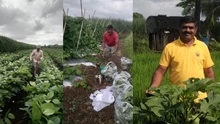
Cow dung, a useful and abundant material, is indigestible plant material released from the intestine of a cow. Whether it comes from animals or humans, feces is generally not a favorite topic of conversation, but cow dung is worth discussing.
It is a useful material that helps us in a variety of ways. It’s a shame when such plentiful and renewable resource is wasted.
Due to its soft texture, which tends to get deposited in a circular shape, gives dung patches their alternate names like – cow pies and cowpats. The manure is used as a rich fertilizer, which is an efficient fuel and biogas producer, a useful building material, raw material for making paper, and insect repellent. Manure plays an essential role in the lives of various animals, plants, and microbes including ding beetles and the Pilobolus fungus.
Uses of Cow Dung
Biogas and Fuel
Dried cow dung is an excellent fuel. In some cultures, dung from domestic cows or buffalo. After being mixed with straw, is collected and dries for fuel. These dried pieces are lit to provide heat and flame for cooking. Even in North America people are making use of the energy stored in cow dung, although it is done indirectly by making biogas from the dung. ‘Biogas’ is a mixture of gases that are produced by anaerobic (which occurs in the absence of oxygen) digestion of organic matter by bacteria. Organic matter can be anything like- animal dung, sewage, plant material, or food waste. The device that digests the material is referred to as a biogas digester. The gas produced can be used as fuel.
Biogas – Production, and Uses
The general process of making an anaerobic digester for cow dung is by placing dung and water in an airtight container, which must be kept warm and undisturbed so that the bacteria can do their work. The gas that is produced is withdrawn through a tube and stored. Once biogas formation is done, it can be reacted with oxygen to produce energy. The gas can be used to cook food, heat water, and replace conventional fuel in motor vehicles. Moreover, the energy in biogas can be used to produce electricity.
As Building Material
Sometimes cow dung is applied on the floors of rural homes in India and may be applied on the walls as well. The mixture forms a waterproof layer that helps to insulate the house from heat loss or gain and doesn’t smell unpleasant. A new process is to make building bricks from cow dung mixed with straw dust. These bricks are much lighter than conventional ones.
Manure residue from biogas production could be used instead of sawdust to make fiber-board, as it contains fibers and will be sterilized and is then mixed with resin to make the board. This board has many uses – manufacture furniture and floors in homes, etc. the high fiber content enables people to make paper from the dung. The dung is washed to extract the fibers, which are then pressed into paper on a screen. This paper can also be bought commercially.
An Insect Repellent and perhaps a disinfectant
When cow dung is burned, the smoke that comes out has been found to repel insects, including mosquitoes. This characteristic has led to deliberation in its use as an insect repellent in some areas. This in itself is an interesting fact. Unsterilized cow dung contains microbes that can infect humans.
As Fertilizer
It is important to remove cow dung from fields as dried pats reduce grazing area. Also, cow pats give off methane, which acts as a greenhouse gas in the atmosphere. Water run-off carries some of the dung into rivers and other bodies of water, polluting them with nutrient excess. Cow manure can make good fertilizer and is rich in minerals, especially nitrogen, phosphorus, and potassium. It supports the growth of beneficial microorganisms when it’s mixed with soil. It can also improve the texture of soil and help it to maintain moisture. Often, manure is too rich in certain chemicals and needs to be diluted or left to sit in the soil for some duration before crops are planted.













